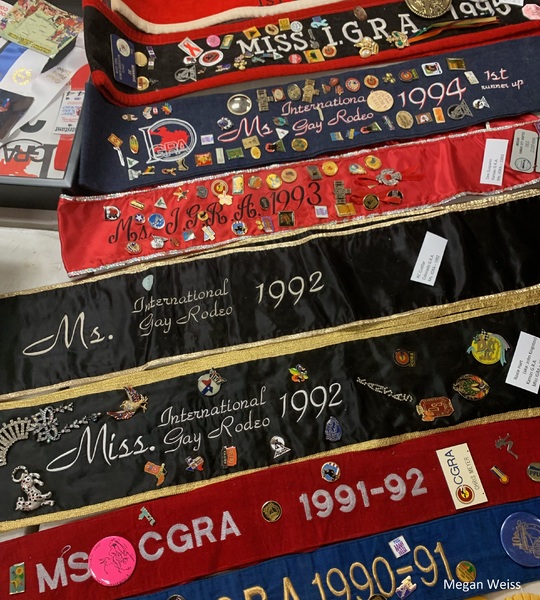Dublin Core
Title
Description
Utah is known for its rodeos. Burly cowboys ride bulls and swift cowgirls barrel race in dangerous and dazzling displays. But only one Utah rodeo features drag queens dressing a goat in tighty-whities! The gay rodeo, originally established in Nevada in 1979, became an event for queer Utahns to find community in their shared Western heritage.
The gay rodeo emerged from the politically-charged 1970s. Queer people fled to city centers, finding a new identity in the increasingly popular gay bar scene. But finding queer community often meant relocating away from rural areas and traditions. Thus, the gay rodeo was born – an event that allowed queer folk to flaunt their cowboy roots.
In addition to paying homage to rural heritage, the gay rodeo was a way to subvert the typical gender expressions expected in rural America. Rodeos rewarded ideal "American Males," individual ranchers or farmers whose physical strength allowed them to make a living off the land. In this atmosphere, gay cowboys were often ostracized from the rodeo circuit. Women could also not compete in events like bull riding. The gay rodeo turned these gender norms on their head, allowing gay cowboys to compete and placing men, women, and nonbinary contestants alongside each other.
The gay rodeo’s “Camp Events" centered around livestock just like other rodeos, but they always had a queer twist. Things like steer decorating, goat dressing, and a drag queen chute race with a steer were all humorous displays that relied on teamwork. Perhaps the most poignant event was the riderless horse ceremony, where a single horse was led through the arena in silence to honor those in the community lost to AIDS.
Between the fancy wigs and gossamer gowns, Utah's gay rodeo is still a rodeo. In all these displays, symbols of hard work such as wrangling animals, ropes, and barrels are reclaimed into symbols of queer resilience and identity in the face of immense change. Depictions of rural Utah rarely include queer people. In reality, queer Utahns have always existed in rural spaces, and having a rodeo of their own allows them to celebrate that rich heritage in an inclusive way.
Creator
Source
_______________
See “Rodeo Events,” Utah Gay Rodeo, accessed March 2024; Rick Egan, “Utah gay rodeo returns after 19 years, brings competition, belonging to queer country community,” June 23, 2023, Salt Lake Tribune, accessed March 2024; Museum of Natural and Cultural History, “Gay Rodeo: A Celebration of Western Rural Heritage and Gay Culture, with Craig Miller,” November 27, 2019, Youtube, accessed March 2024; Audrey Lockie, “Pride Outside of Pride,” May 31, 2023, Slug Magazine, accessed March 2024; Matt Cullen, “Deep Inside The GAYEST Rodeo In The World,” February 25, 2024, Youtube, accessed March 2024.

